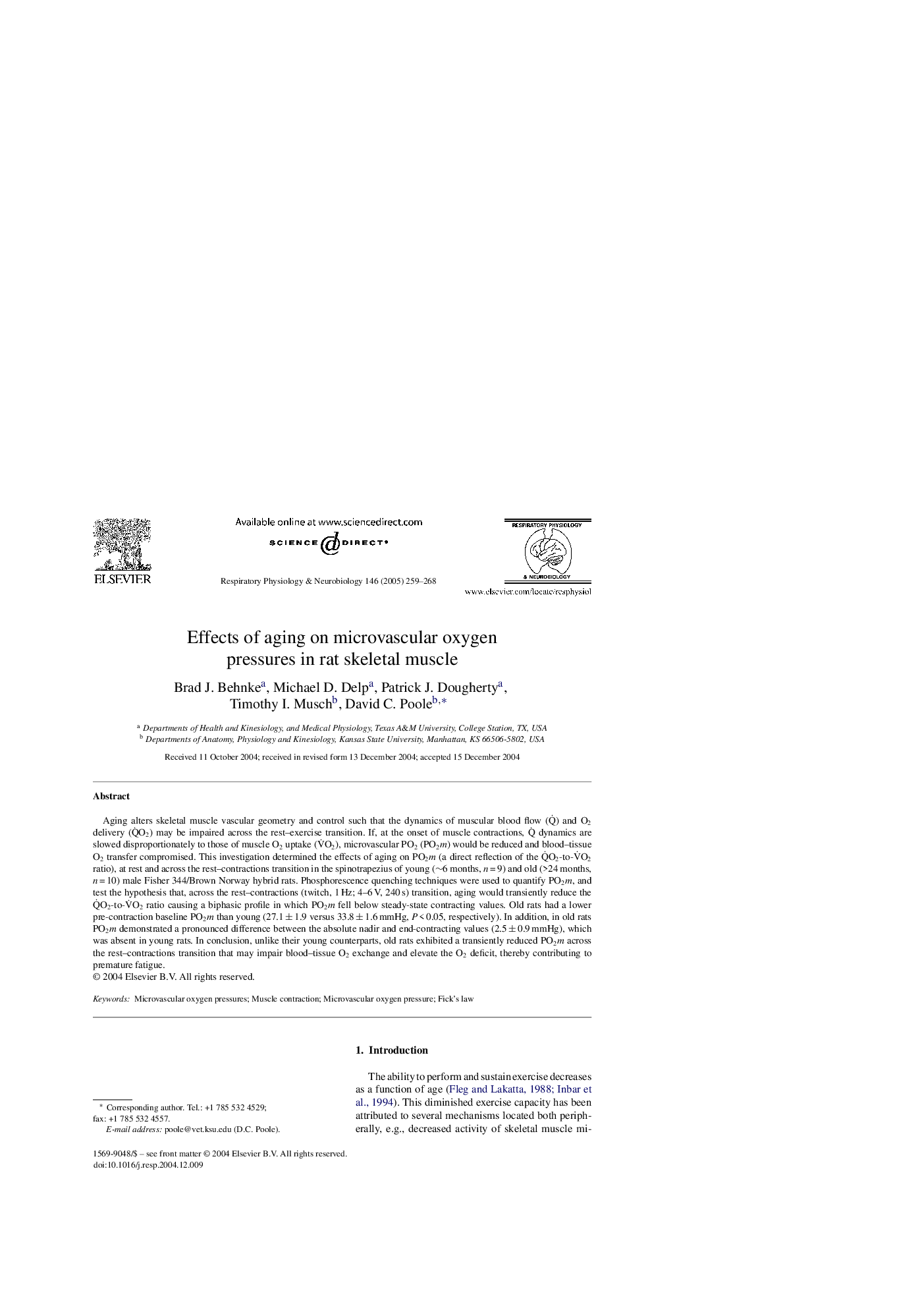| Article ID | Journal | Published Year | Pages | File Type |
|---|---|---|---|---|
| 9152360 | Respiratory Physiology & Neurobiology | 2005 | 10 Pages |
Abstract
Aging alters skeletal muscle vascular geometry and control such that the dynamics of muscular blood flow (QË) and O2 delivery (QËO2) may be impaired across the rest-exercise transition. If, at the onset of muscle contractions, QË dynamics are slowed disproportionately to those of muscle O2 uptake (VËO2), microvascular PO2 (PO2m) would be reduced and blood-tissue O2 transfer compromised. This investigation determined the effects of aging on PO2m (a direct reflection of the QËO2-to-VËO2 ratio), at rest and across the rest-contractions transition in the spinotrapezius of young (â¼6 months, n = 9) and old (>24 months, n = 10) male Fisher 344/Brown Norway hybrid rats. Phosphorescence quenching techniques were used to quantify PO2m, and test the hypothesis that, across the rest-contractions (twitch, 1 Hz; 4-6 V, 240 s) transition, aging would transiently reduce the QËO2-to-VËO2 ratio causing a biphasic profile in which PO2m fell below steady-state contracting values. Old rats had a lower pre-contraction baseline PO2m than young (27.1 ± 1.9 versus 33.8 ± 1.6 mmHg, P < 0.05, respectively). In addition, in old rats PO2m demonstrated a pronounced difference between the absolute nadir and end-contracting values (2.5 ± 0.9 mmHg), which was absent in young rats. In conclusion, unlike their young counterparts, old rats exhibited a transiently reduced PO2m across the rest-contractions transition that may impair blood-tissue O2 exchange and elevate the O2 deficit, thereby contributing to premature fatigue.
Keywords
Related Topics
Life Sciences
Biochemistry, Genetics and Molecular Biology
Physiology
Authors
Brad J. Behnke, Michael D. Delp, Patrick J. Dougherty, Timothy I. Musch, David C. Poole,
